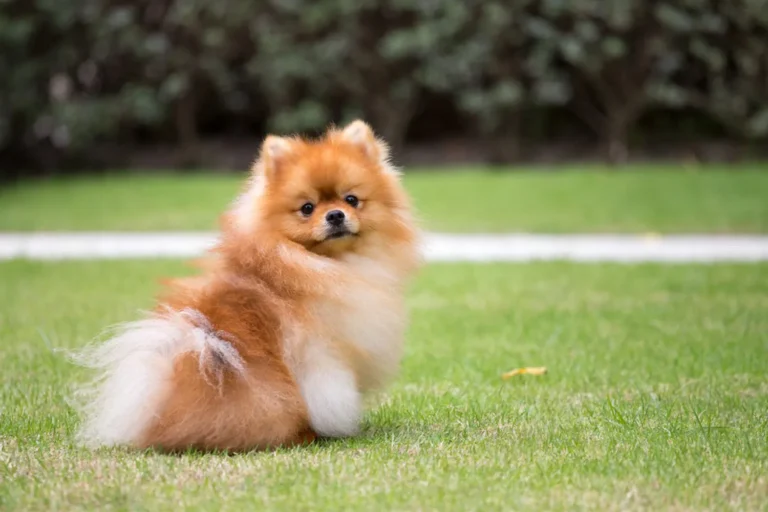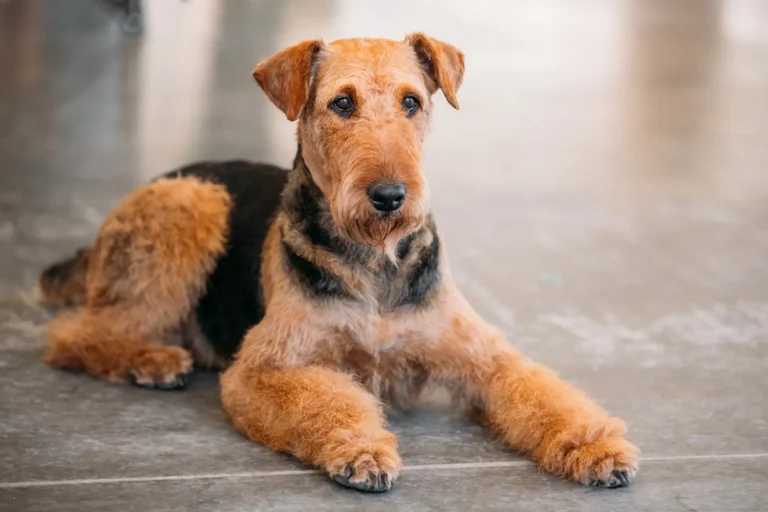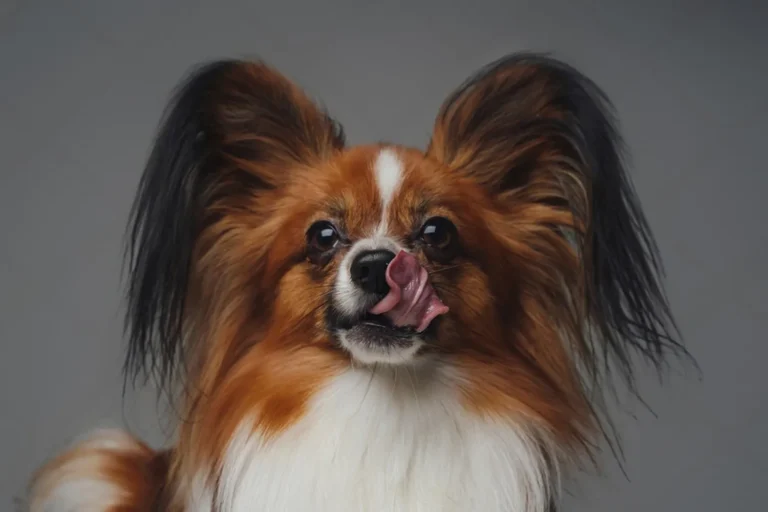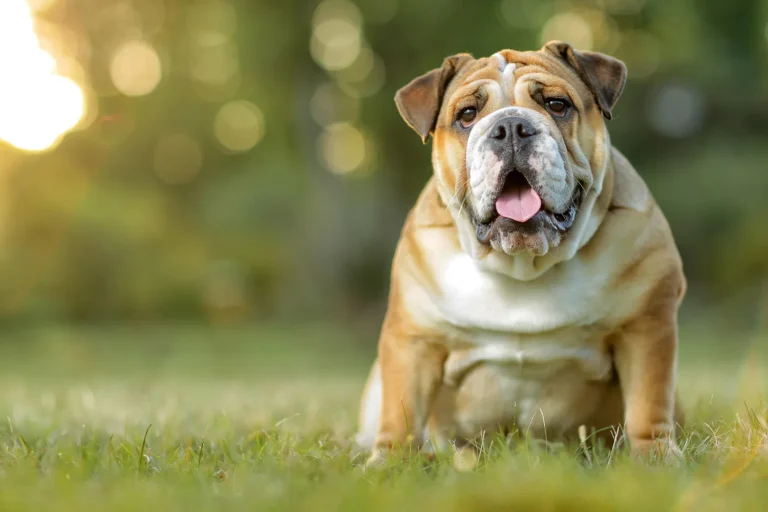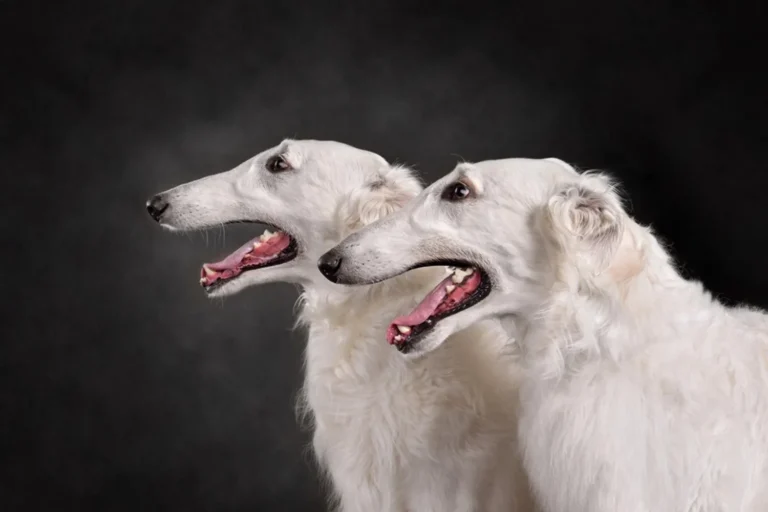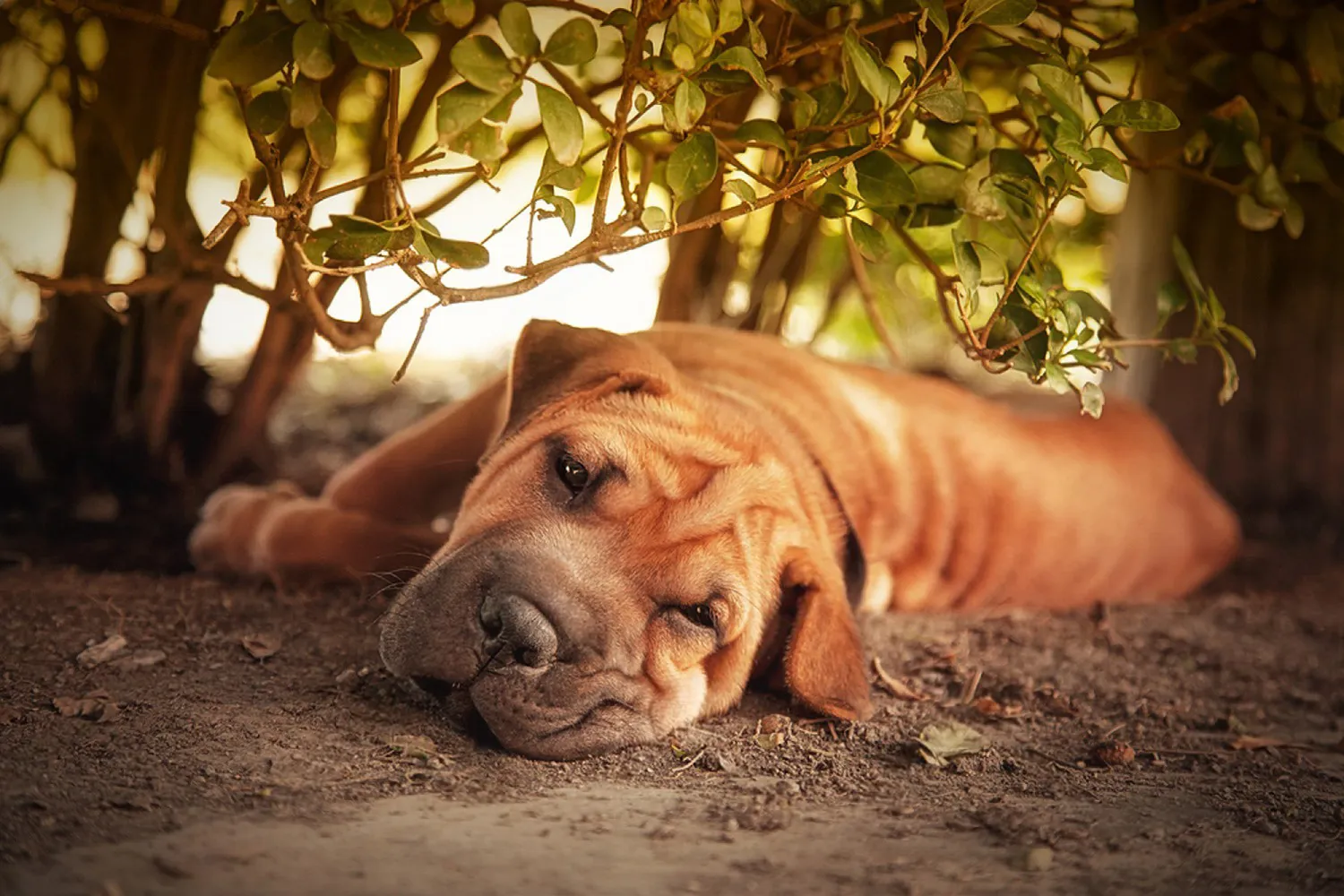
With their loose, squishable wrinkles and that proud, curly tail, the Shar Pei is one of those dogs you can spot from across the park. The first time I met one, he trotted over like a little dignitary, gave me a calm once over, then leaned gently against my leg as if we’d known each other for years. If you’re considering adding one of these uniquely charming pups to your family, you’re in for an experience that blends goofy looks with a thoughtful, sometimes independent personality.
A quick tip from my own routine: get in the habit of a simple wrinkle check after playtime or a walk. A soft cloth and a few seconds of drying between skin folds can prevent irritation and keep them comfy. Early socialization goes a long way with this breed, too introduce friendly faces and sounds so they grow into confident companions. If possible, meet a few Shar Pei in person (breeders or rescues are great resources), ask about their daily care, and pay attention to that tail wag and calm demeanor. When they bond with you, they’re wonderfully loyal and those wrinkles? They become impossible not to kiss.
What Is the History and Origin of the Chinese Shar Pei?
Picture southern China more than 2,000 years ago, during the Han Dynasty: small farms, busy courtyards, and a sturdy, no nonsense dog trotting from the barn to the field. That was the Shar Pei’s world. They weren’t pampered palace pets they were peasant dogs expected to do a bit of everything. Farmers relied on them as steady herders, keen little hunters, and watchful guardians that could keep livestock safe from rustlers and wandering predators. It’s the kind of versatile, practical job description I admire; when I first met a Shar Pei named Bean at a local farm stand, he moved with that same purpose quiet, thoughtful, always checking in.
The breed nearly disappeared in the mid-20th century. After 1949, dog ownership in mainland China was discouraged, and countless dogs were lost. A few Shar Peis survived only because small groups were still being bred in places like Hong Kong and Taiwan. I once chatted with a longtime owner at a fun match who kept a faded photograph of a Hong Kong import from the early days she told me it reminded her how close the breed came to vanishing.
Enter Matgo Law, a dedicated breeder in Hong Kong. Thanks to his efforts, a small group of Shar Peis made their way to the United States in 1973, where a wave of enthusiastic support from dog lovers helped save the breed. The Chinese Shar Pei Club of America formed in 1974, and the American Kennel Club officially recognized the breed in 1992. If you share your home with a Shar Pei today, you’re living with a little piece of living history. My advice: give them a job daily walks, simple scent games, polite guard duty routines because under those famous wrinkles is a hardworking heart that loves to be needed.
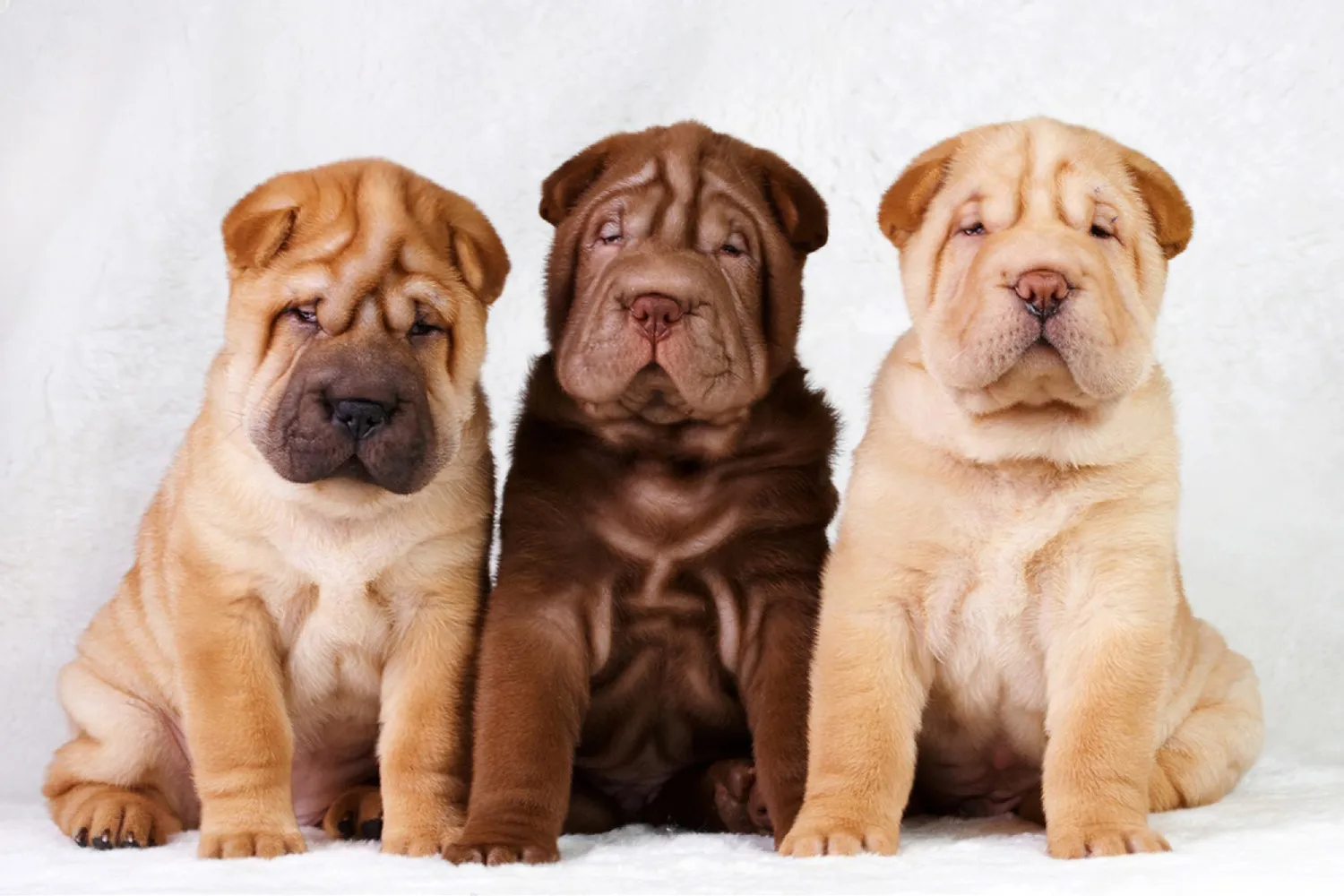
What Is the Chinese Shar Pei?
If you’ve ever seen a dog that looks like it’s wearing an oversized, rumpled sweater and giving you a bit of side eye, you’ve probably met a Chinese Shar Pei. This medium size member of the non sporting group has an ancient pedigree and a personality that can be both intriguing and a little challenging. They’re fiercely loyal to their people once you’re “in,” you’re in for life but they can be aloof with strangers. My neighbor’s Shar Pei, Bao, would happily nap on my feet after a few visits, but the first time we met, he analyzed me like a detective, then calmly walked back to his family’s side. That’s classic Shar Pei.
Their look is unforgettable: a wide, hippopotamus like muzzle, tiny triangular ears, and that famous blue black tongue. The eyes are small and set deep, which often gives them a permanent scowl, even when they’re perfectly content. From head to shoulders, they’re draped in abundant skin folds, all covered by a harsh, bristly coat fitting for a breed whose name translates to “sand skin.” I’ll never forget the first time I brushed one; the coat felt surprisingly firm, almost like a gentle scrub brush.
A couple of friendly tips: let a Shar Pei come to you instead of rushing in with pats they appreciate a polite introduction. And if you live with one, keep a soft cloth handy to gently dry and check those adorable wrinkles after baths or rainy walks. A little routine care and respectful space go a long way with this one of a kind companion.
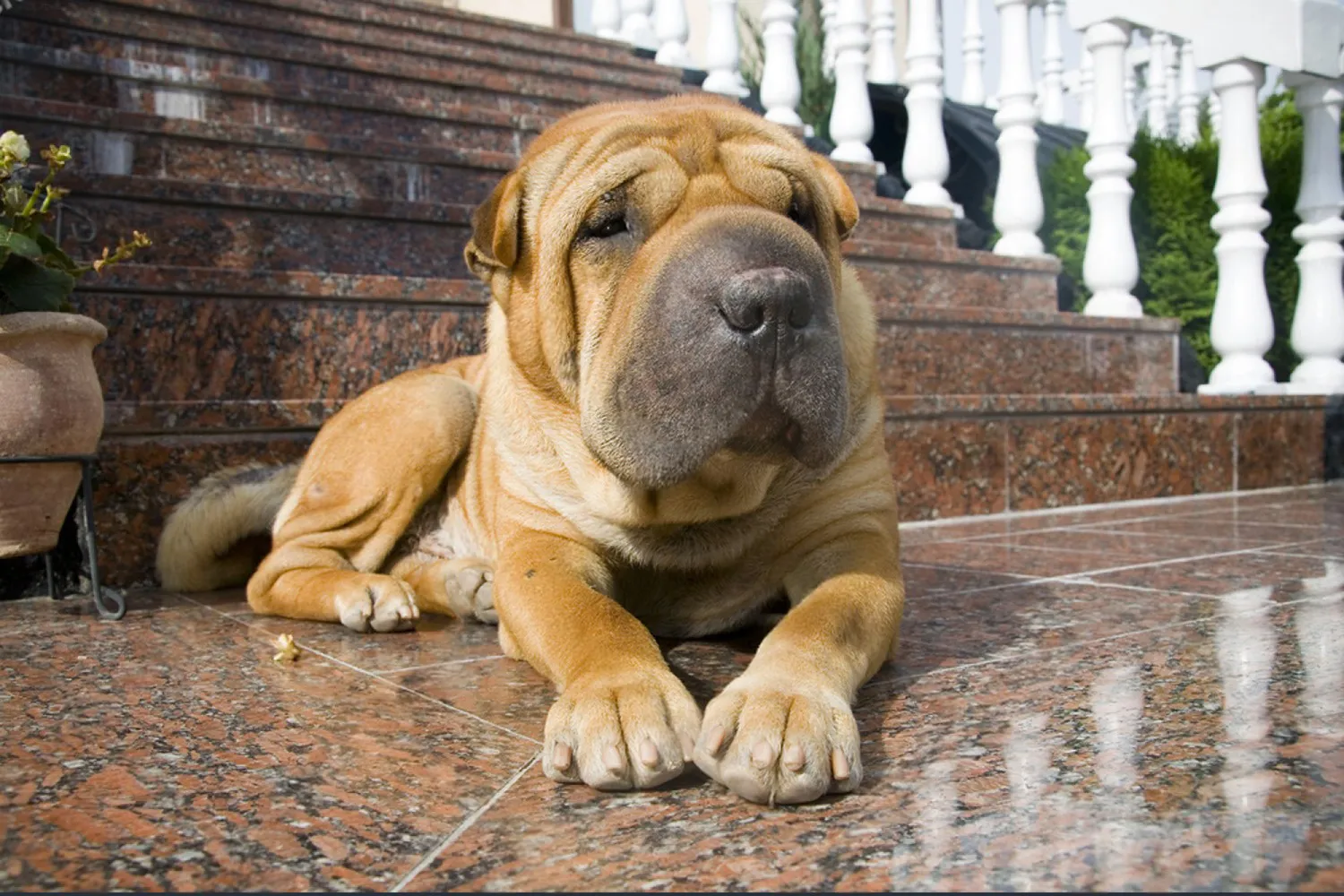
Who Is a Chinese Shar Pei Best For?
The Shar Pei is wonderfully independent and a bit dignified, which makes it a better fit for families with older kids who understand gentle handling and dog boundaries. I’ve seen these pups thrive in calm households where everyone respects their space think teens who won’t treat the dog like a stuffed animal. They’re not high strung, but they do appreciate consistency and a person who’s confident with training. If you enjoy setting routines, keeping sessions short and positive, and letting a dog make a few of their own choices, you’ll get along famously with a Shar Pei.
City, suburbs, or country they’re surprisingly adaptable. I once dog sat a Shar Pei in a tiny Brooklyn walk up and she was perfectly content with two brisk walks a day and a good snooze by my feet while I answered emails. A big backyard is optional; what matters is daily time outside to stretch those legs and sniff the world. Aim for a couple of decent walks or a mix of strolls and playtime. They’re not marathon runners, but they do appreciate a purposeful outing and then being part of whatever you’re doing next.
Most of all, Shar Pei love simply being with their people. If your lifestyle means the dog can hang out alongside you working from home, weekend errands, movie nights you’ll have a happy companion. Add a few puzzle toys, steady socialization, and respectful kids, and this thoughtful, loyal breed really shines.
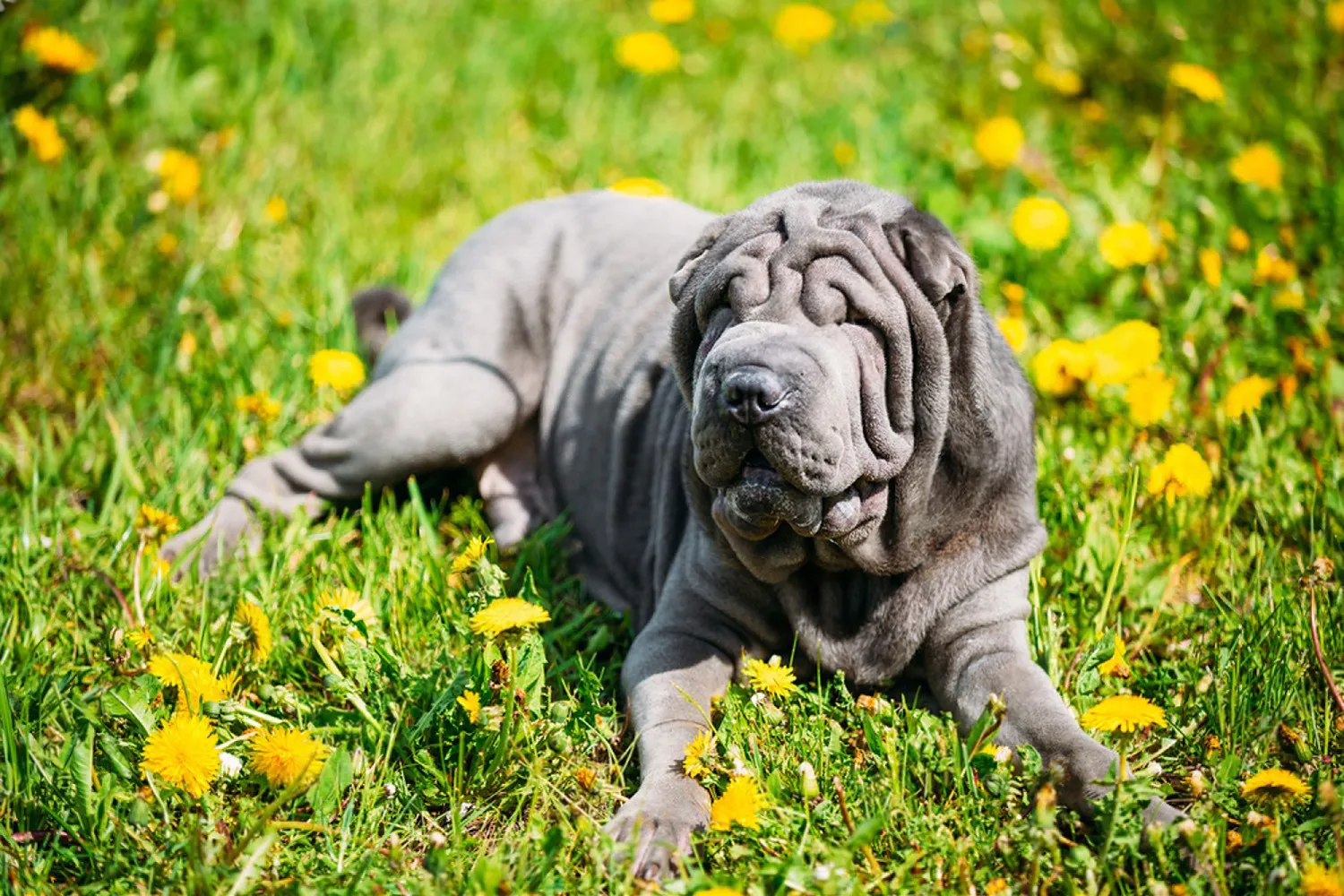
Chinese Shar Pei Grooming and Shedding
Those famous wrinkles and that bristly, stand up coat are what make the Shar Pei so unmistakable. The coat can be very short like a “horse” coat or a touch longer like a “brush” coat, and both feel a bit like fine sandpaper when you run your hand over them. Despite the rugged texture, Shar Pei are naturally tidy dogs with very little doggy odor. Mine has always been the type who would rather keep clean than get messy though puddles do have a way of finding us.
For regular upkeep, one good brushing session a week does the trick. I like a grooming mitt or rubber curry comb because they’re gentle and efficient at lifting dirt and loose hair from that upright coat. Brush with light, even strokes and don’t press too hard; their skin can be sensitive. I usually keep sessions short and sweet, ending with a treat so my dog actually trots over when he sees the mitt come out.
Baths are the easy part and infrequent. Every few months is plenty for most Shar Pei, since over bathing can irritate their skin. When you do bathe, use a mild, dog safe shampoo, rinse thoroughly, and then focus on drying as if it’s your main mission. I keep a stack of microfiber towels ready and gently blot, blot, blot. A cool setting blow dryer held at a distance can help, especially around the neck and body folds, but keep it moving so you’re not blasting one spot.
Here’s the crucial bit: those wonderful wrinkles need to be kept clean and absolutely dry. Any lingering moisture between skin folds can invite yeast or fungal infections. I’ll do a quick wipe of the folds with a soft cloth or vet recommended wipe, then follow with a dry towel to remove every bit of dampness. On rainy days, I keep a small hand towel by the door and pat everything dry right after walks especially under the neck and along the shoulders. One time after a muddy hike, I missed a tiny crease behind the elbow, and by the next day it looked pink and itchy. Lesson learned: check all the nooks.
Shedding wise, expect light to moderate shedding most of the year, with a bit more during seasonal changes. The shorter “horse” coat can leave tiny hairs that cling to clothes like little porcupine quills nothing a lint roller and a quick weekly brush can’t handle. A rubber grooming glove works wonders here. I avoid harsh de shedding tools on Shar Pei because their skin is easily irritated; a steady grooming routine is more than enough.
A few extra habits round things out nicely. Wipe folds after any water play or drooly moments, and peek at them regularly so you catch issues early. Keep nails trimmed and teeth brushed grooming time is a perfect moment for a once over. A Shar Pei breeder I spoke with in California told me she keeps a timer after baths and does a “dry check” 20 minutes later, just in case moisture sneaks back into the folds. I borrowed that trick, and it’s saved us more than once.
With a little consistency and a lot of thorough drying, Shar Pei grooming is straightforward. Minimal odor, quick weekly brushes, careful baths, and vigilant wrinkle care that’s the winning formula for a happy, healthy, gloriously wrinkled friend.
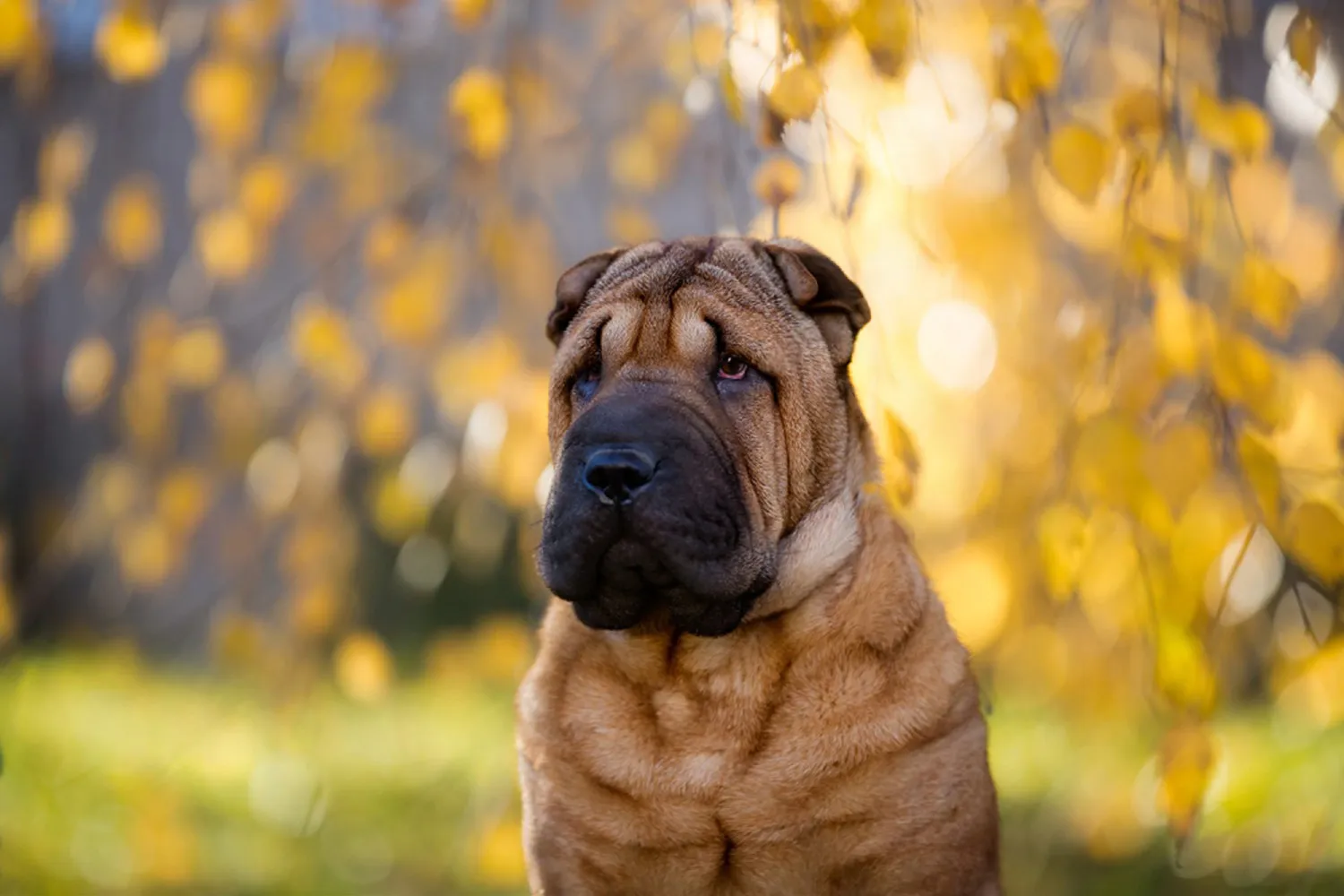
Do Chinese Shar Peis Bark a Lot?
Short answer: yes, they can be pretty vocal. Shar Peis were bred as herders and livestock guardians, so sounding the alarm is part of their DNA. That “Hey, who goes there?” bark was how they kept predators and intruders at bay, and many still take that job very seriously. My neighbor’s Shar Pei, Bao, can snooze like a champ all afternoon, but the second a delivery truck grumbles past, he’s up with a deep, confident woof that means business. They’re generally calm at home, but they’re naturally suspicious of unfamiliar dogs and strangers, and when something feels “off,” they’ll meet it with a lot of determination.
You won’t erase barking entirely (and honestly, you shouldn’t an alert bark can be useful), but you can keep it from getting excessive. Obedience training makes a big difference. I like to teach “quiet” after an initial alert: let them bark once or twice, then ask for “quiet,” and immediately reward the moment they pause treats, praise, whatever makes their tail wag. I once staged a whole “doorbell rehearsal” with a friend: ring the bell, two barks allowed, then “quiet,” reward, reset. Five short sessions beat one long one. Early socialization helps too calm, positive introductions to new people and polite dogs so every stranger doesn’t feel like a potential threat.
A few lifestyle tweaks go a long way. Give that sharp mind a job sniff walks, puzzle feeders, or a short training game before you settle in for the evening. Reduce trigger views by blocking window perches or using frosted film if street action sets them off. Add background sound for surprise noises, and be consistent: if you praise a sensible alert and then calmly end it with “all done,” your Shar Pei learns there’s a time to speak and a time to chill. One time I slacked on our routine for a weekend, and surprise barking popped right back up. With consistency and clear cues, though, most Shar Peis become reliable, respectful watchdogs rather than non stop noisemakers.
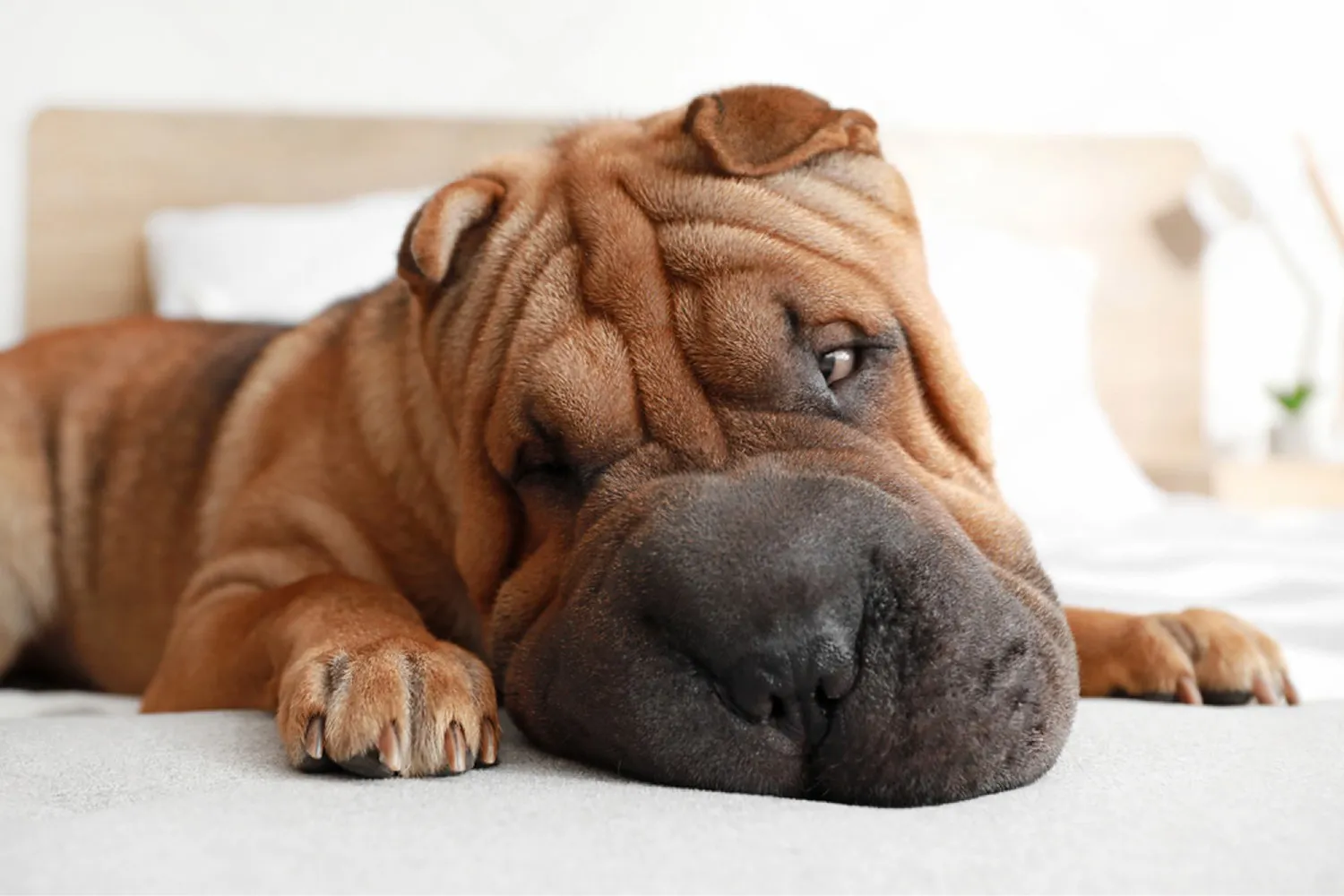
Average Weight and Height of a Chinese Shar Pei
Adult Shar Peis are compact and sturdy, usually standing 46-51 cm at the shoulder (about 18-20 inches) and weighing around 18-30 kg (roughly 40-66 pounds). Males and females run about the same size, which always surprises people meeting them for the first time. I think of them as “solid hugs with legs” – not tall, but definitely substantial. My neighbor’s Shar Pei, Noodle, sits right in the middle at 19 inches and 50 pounds, and he’s a picture of balance.
Focus less on the number and more on condition: you should feel ribs with light pressure and see a slight waist. Many Shar Peis finish filling out between 12 and 18 months. To measure height, stand your dog by a wall and use a book at the withers; for weight, step on a bathroom scale with your dog, then subtract your own weight. If your pup falls a bit outside the range but looks lean and moves well, a quick vet check can confirm you’re on track.
https://en.wikipedia.org/wiki/Shar_Pei
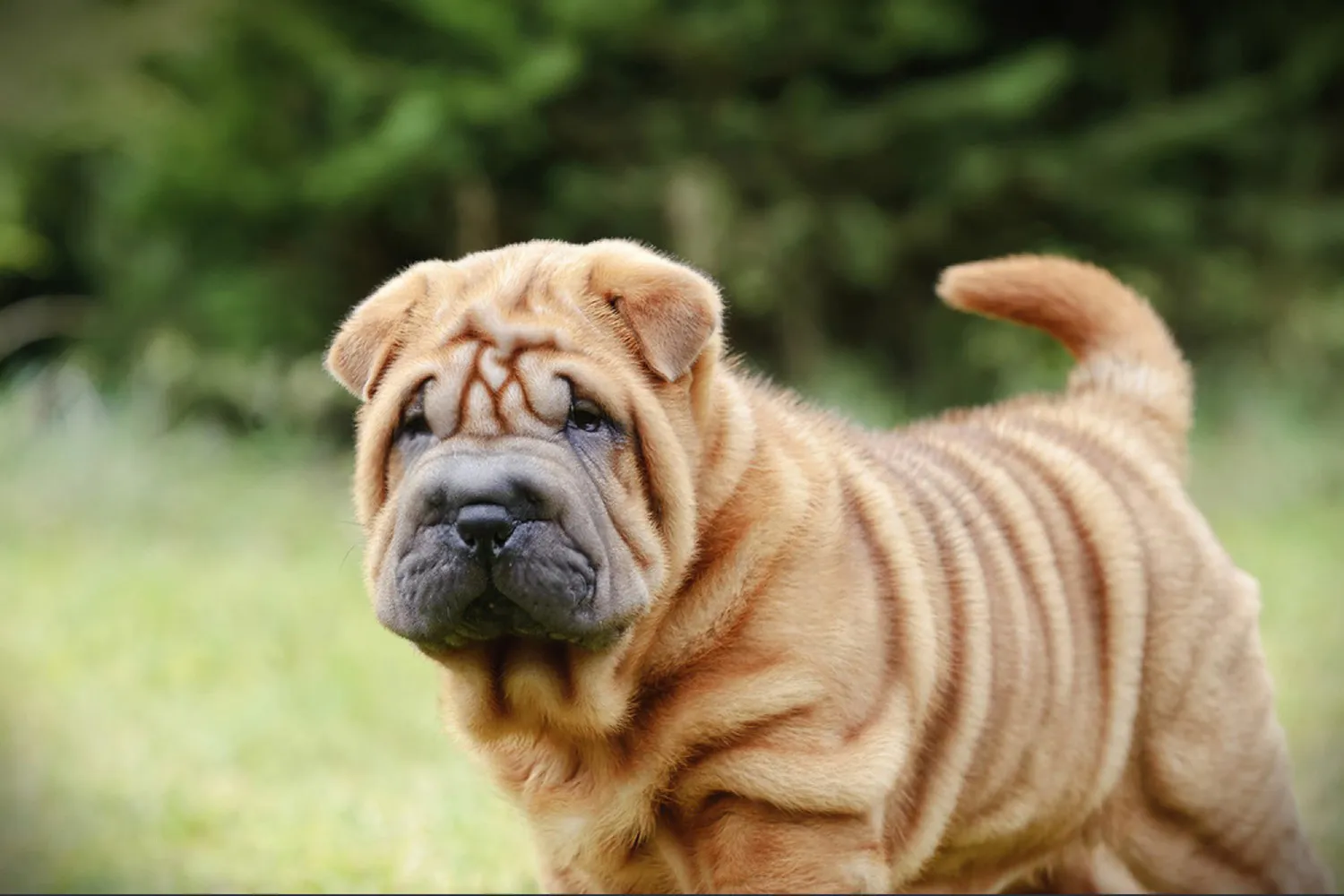
Are Chinese Shar Peis Easy to Train?
Shar Peis definitely have a stubborn streak, but don’t let that fool you they’re sharp and pick things up fast when the payoff is worth it. Food is the golden ticket here. I once helped a neighbor teach her Shar Pei “leave it,” and progress was glacial until we switched to tiny bits of roast chicken. Suddenly, the gears turned. They’re independent thinkers, so make it clear what you want, keep sessions short and upbeat, and use high value treats they can’t resist.
You do need to be the calm, confident leader and stick to your rules. These wrinkly charmers will test boundaries, so don’t let those sweet eyes talk you into bending them “just this once.” Start early, be consistent, and end each session on a win. I’ve had great luck mixing rewards sometimes treats, sometimes a favorite toy or praise so they don’t get bored. Socialize them well, keep training fun, and you’ll have a well mannered Shar Pei who genuinely wants to please. One tip I swear by: pocket the treats before you call them; nothing says “I’m listening” like the rustle of a snack bag.
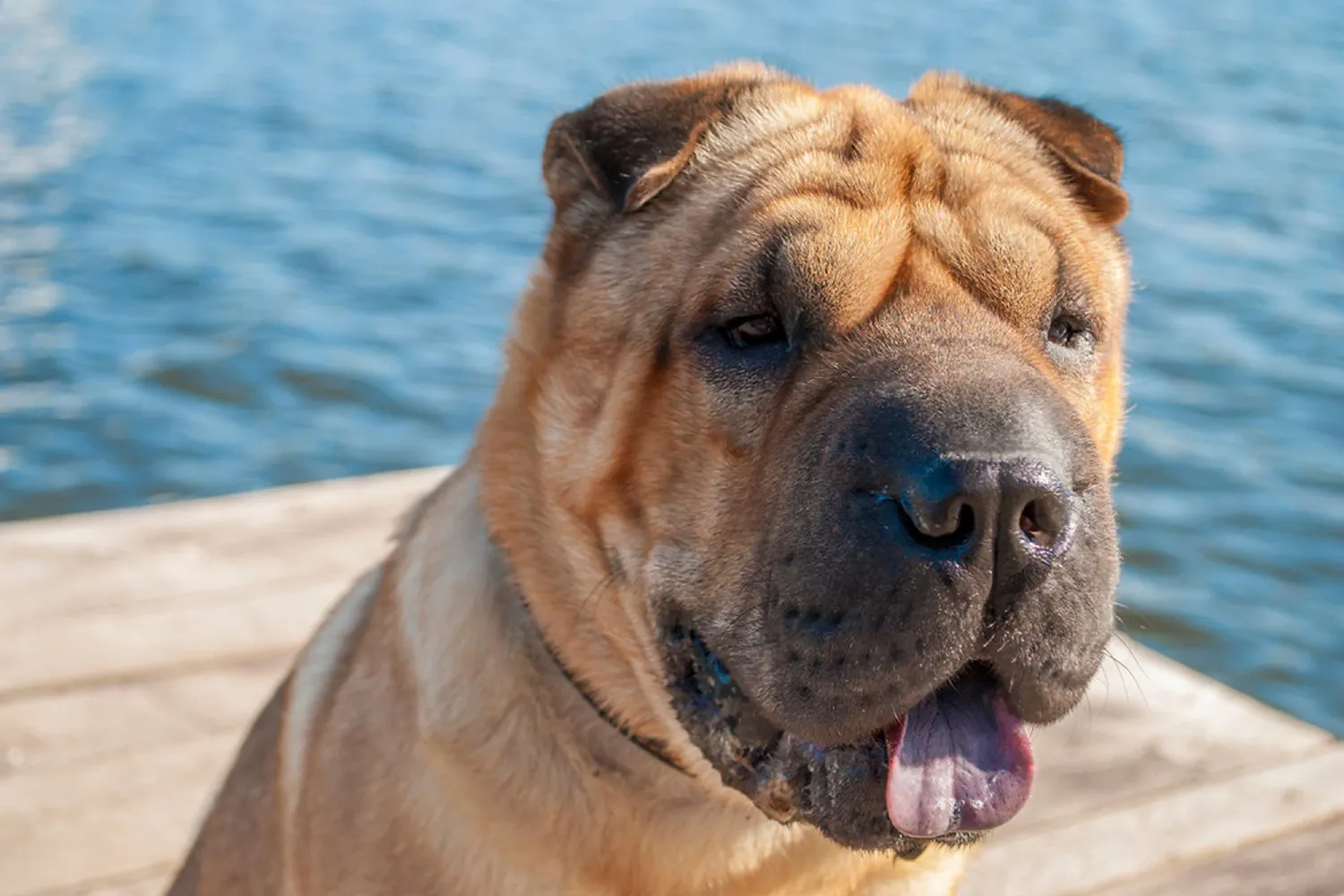
How Do Chinese Shar Peis Behave? A Look at Their Temperament and Personality
Shar Peis are the definition of independent and alert almost catlike in the way they quietly size up a room. They’re intensely loyal to their families and don’t hand out friendship bracelets to strangers. I once met a Shar Pei named Bao at a Saturday farmers market; he never barked, never fussed, just stood between his owner and the crowd, calmly watching, clearly saying, “I’ve got this.” That’s classic Shar Pei: polite but standoffish with people they don’t know, and generally more into their humans than into meeting new dog buddies. This isn’t your typical dog park social butterfly.
At home, though, they are devoted shadows. A serene, confident Shar Pei will pad after you from room to room like a quiet bodyguard. They read their people remarkably well. One I dog sat would nudge my elbow if I sighed at my laptop, then curl up at my feet as if to say, “We’ll ride it out together.” Their intuition is lovely, but it comes with a strong streak of free spirit. Training works best when it’s calm, consistent, and short think quality over quantity. I’ve had good luck with clear rules, plenty of praise, and a sense of humor. Pushy methods backfire; they’ll simply stare at you like you’ve lost the plot.
They are protective by nature and will respond if something feels off, so thoughtful socialization matters. I like to introduce new people slowly, let the dog sniff from a comfortable distance, and have a go to cue like “place” or “enough” to help them settle. Don’t force meet and greets or chaotic environments; give them structure and choices. In the right hands, that serene confidence shines, and you get a steadfast companion who may not love everyone but will absolutely adore their family.
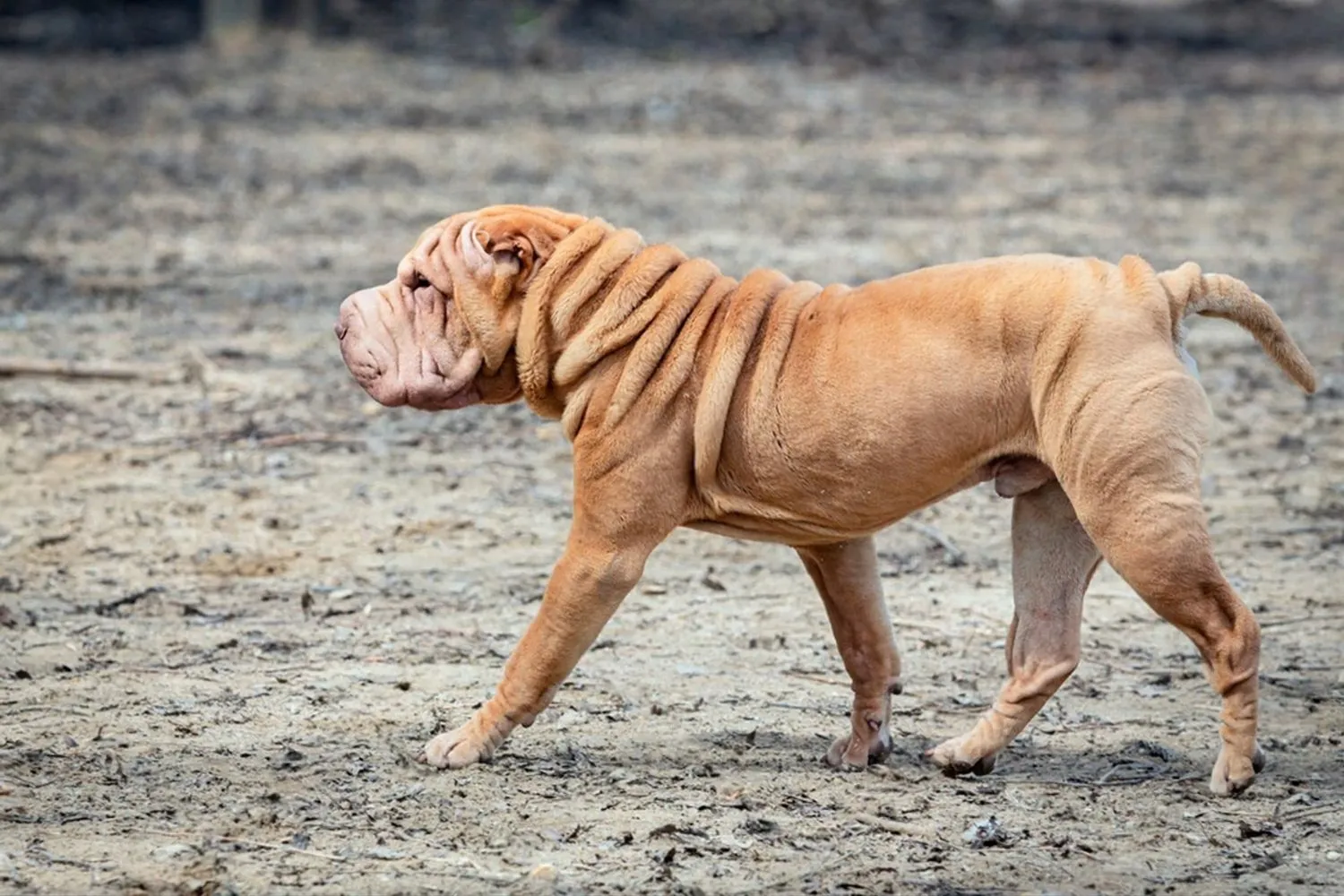
Do Chinese Shar Peis Have Common Health Issues?
Shar Peis can be a bit more prone to certain health problems, especially skin related ones. That doesn’t mean your dog will have them, but it’s smart to know what to watch for. I’ve loved these wrinkly characters for years, and a little knowledge (and a good routine) goes a long way.
Shar Pei fever (also called swollen hock syndrome) pops up on a lot of breed lists. You’ll see swelling in one or both hocks, and the dog may refuse to move because it hurts. Other symptoms can include vomiting, abdominal pain, shallow breathing, and diarrhoea. A friend’s Shar Pei had an episode after a busy day at the park one minute he was fine, the next he wouldn’t get off his bed and his back leg looked puffy. We called the vet right away, and that quick action made all the difference.
Hypothyroidism is another condition to be aware of. It’s an abnormality in the thyroid gland and can show up as hair loss (alopecia), lethargy, weight gain or obesity, skin infections like pyoderma, and even seizures in some dogs. The good news is it’s usually very manageable with medication and diet adjustments. One of my fosters brightened up within weeks of starting treatment her coat improved, and her “zoomies” came back like a switch flipped.
Seborrhea can give Shar Peis that telltale flaky skin and a strong, unpleasant odour. It’s often secondary to something else an infection, allergy, or another disease so the fix usually includes a medicated shampoo plus treating the underlying cause. I keep a gentle skin care routine for wrinkly breeds: rinse off after muddy walks, dry those folds thoroughly, and use the shampoo your vet recommends. I learned the importance of drying folds the hard way after a summer heat wave turned a few damp wrinkles into a stinky situation.
OCD (Osteochondrosis Dissecans) is an orthopaedic condition caused by improper cartilage growth in the joints, most commonly the elbows. It leads to painful stiffness and the dog may not be able to fully bend the elbow. It can show up as early as 4-9 months. Overfeeding, especially high protein or “growth formula” puppy foods, may contribute. With my large breed pups, I’ve had the best luck sticking to a balanced puppy diet, steady growth, and avoiding long, high impact exercise while they’re young.
Entropion is fairly well known in Shar Peis. It’s when the eyelid often the lower one rolls inward, irritating the eye and potentially affecting vision. It usually happens in both eyes and often appears before 12 months of age. Vets typically plan corrective surgery once the dog is mature. My neighbour’s Shar Pei had the procedure as an adult and was back to gazing out the window comfortably in no time.
Other conditions to keep on your radar include hip and elbow dysplasia, glaucoma, and bloat. With dysplasia you might notice stiffness or bunny hopping; with glaucoma, eye pain or cloudiness; and with bloat, sudden abdominal swelling and restlessness are red flags. If something seems off, don’t wait call your vet.
You can lower the risk of many of these issues by choosing a responsible breeder who screens their dogs for common conditions. Ask about health testing on parents and what they’ve seen in their lines. Then keep up the good habits at home: yearly checkups, vaccinations, and parasite prevention. I also recommend:
– Keep your Shar Pei lean; extra weight stresses joints and skin.
– Feed a balanced diet and avoid overfeeding, especially during puppy growth.
– Maintain a simple skin routine clean, rinse, dry those folds, and watch for hotspots.
– Do regular eye checks at home; a quick look every evening can catch irritation early.
– Consider pet insurance or a vet savings fund; Shar Peis are wonderful, and having a safety net helps you say “yes” to care when you need it.
With a bit of planning and a close relationship with your vet, most Shar Peis live happy, wrinkly, snuggly lives. And honestly, once you’ve had one snore on your lap, you’ll forgive them any amount of skincare.
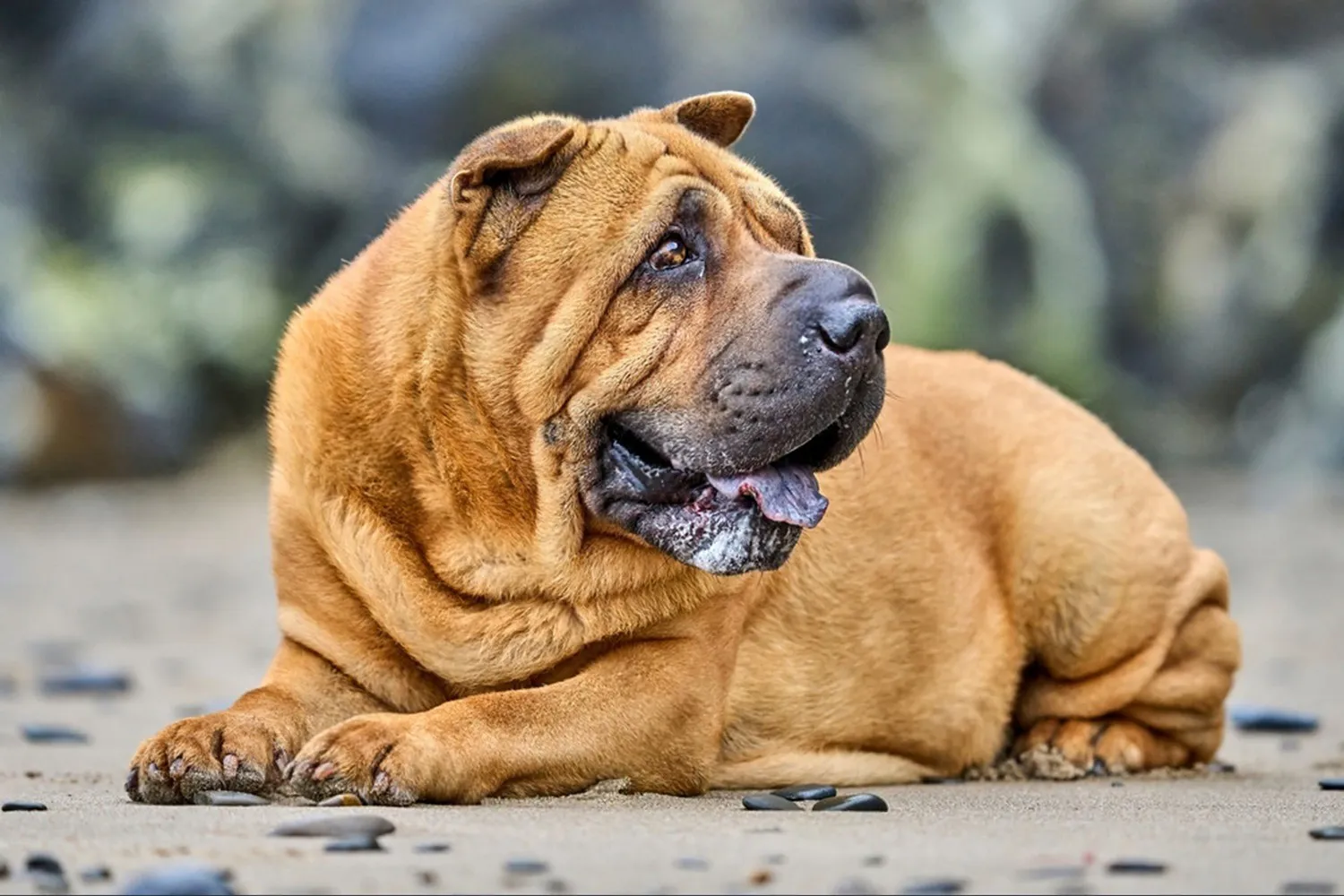
What Is the Lifespan of a Chinese Shar Pei?
In my experience, these wrinkly charmers land solidly in the middle of the pack for longevity: most Shar Pei live about 8-12 years. My neighbor’s Shar Pei, Dumpling, was still trotting proudly around the block at 11, and a foster I had years ago snoozed his way happily into his 12th birthday. With good genetics and consistent care, some do tip into the early teens, but 8-12 years is the typical range.
If you’re aiming for the higher end of that range, the day to day stuff matters. Keep them lean with a balanced diet and steady, moderate exercise think daily walks and a couple of fun play sessions rather than marathon runs. I like mixing in short training games or puzzle toys; my Shar Pei would light up when he “solved” his treat ball. Because of those iconic folds, a quick skin check and gentle wipe down in problem spots can help prevent irritation, and I always peek at ears and eyes during cuddle time. Regular vet checkups, dental care, and joint friendly habits (soft beds, non slip rugs, maybe a ramp for the car) go a long way. Also watch heat Shar Pei can run warm, so we did our longer walks in the morning and saved the couch cuddles for hot afternoons.
As they slide into their senior years often around 7 or 8-you might notice them slowing a bit. I shorten walks but add one more outing, swap high impact zoomies for sniffy strolls, and keep their minds busy with easy training refreshers. Little changes can be big clues: extra thirst, stiffness after naps, or itchy skin are all worth a quick call to the vet. The years go by fast with a Shar Pei, but with thoughtful care and a few good belly rubs, you can make those 8-12 years wonderfully full.
How Much Should a Chinese Shar Pei Eat?
Most adult Chinese Shar Pei do well on roughly 2 to 3 cups of high-quality dog food per day, split into two or three meals. The exact amount depends on your dog’s age, weight, activity level, and the calorie density of the food you choose, so check the feeding guide on the bag and ask your vet for a target. I like to measure meals with the same scoop every time and do a quick “rib check” you should be able to feel the ribs without pressing hard, and there should be a nice waist when you look from above.
Fresh, clean water should be available at all times, and a balanced diet is a must. Shar Pei can be a bit sensitive, so if yours has itchy skin or an upset tummy, ask your vet about a limited ingredient or fish based formula. Keep treats to about 10% of the daily calories I learned the hard way that a few too many training bites add up fast on a compact body.
This breed is prone to bloat, which is life threatening and needs immediate veterinary care. Know the warning signs: a swollen or tight belly, unproductive retching, drooling, restlessness, or sudden discomfort. To help prevent it, offer smaller meals on a regular schedule and slow down fast eaters. I use a slow feeder bowl for mine it turned a frantic five minute gulp into a calm 15-minute meal. Also, keep things low key around mealtimes and limit vigorous exercise for about an hour after eating. I literally set a reminder on my phone so I don’t get tempted into post dinner fetch.
If you’re unsure about portions, bring your Shar Pei’s current food and a photo of their body shape to your vet. A quick chat and a few tweaks can make a big difference in keeping them trim, comfy, and happily trotting by your side.
Chinese Shar Pei FAQs
How do you tell if your dog is a Chinese Shar Pei?
You’ll know a Shar Pei when you see one. Those famous folds, the hippo like muzzle, tiny triangular ears, and the high set, curled tail are a dead giveaway. Puppies are extra wrinkly, while adults often “grow into” their skin a bit, keeping some folds around the head and shoulders. The coat is short and bristly to the touch people call it a “horse coat” for a reason and many have a blue black tongue. If you’re getting a puppy from a breeder, you should receive pedigree papers to confirm the lineage. If you’re adopting and there aren’t papers, a vet or trainer who knows the breed can usually spot the traits, and a canine DNA test can add extra confirmation. I once met a rescue Shar Pei mix at the park his wrinkles were subtle, but that broad muzzle and confident stance told the story.
Can Chinese Shar Peis swim?
This isn’t a natural swimming breed. Their front heavy build, short muzzle, and skin folds make swimming tiring and risky. Those adorable wrinkles hold moisture, and their small ear canals can trap water, which can lead to ear infections. Mine is happy to paddle in the shallows, but I keep it brief, stick to calm water, and always use a dog life jacket just in case. If your Shar Pei gets wet, towel them off thoroughly, especially between skin folds, and gently dry the ears my vet taught me to use a soft cloth and avoid poking deep. Kiddie pools and sprinkler games are safer fun on hot days.
Are Chinese Shar Pei dogs protective?
Absolutely. They’re loyal, watchful, and often reserved with strangers, which can tip into aggression if not guided well. Early, positive socialization is essential: new people, friendly dogs, different places, and lots of treats for calm behavior. I like to host “quiet meet and greets” with one guest at a time guest tosses a treat, dog chooses to approach, no pressure. Enroll in a good puppy class, teach solid cues like “leave it” and “go to your mat,” and advocate for your dog’s space. Structured introductions and consistent training help channel that natural protectiveness into polite, confident manners.
Disclaimer:
This article is for informational purposes only and doesn’t replace professional veterinary or training advice. Always consult a certified vet or dog trainer for guidance specific to your pup.

